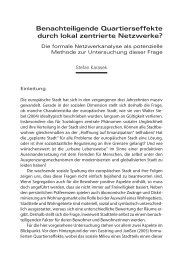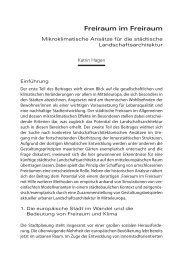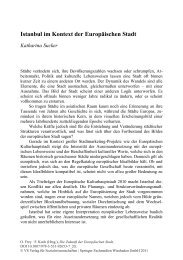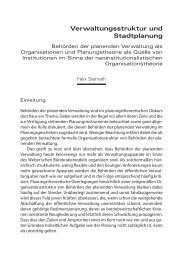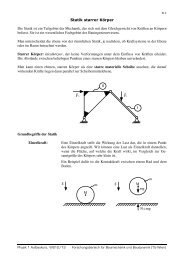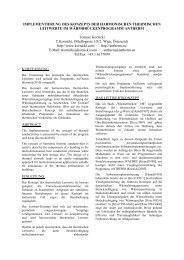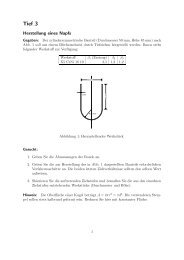Spectral characteristics of ultrashort pulses in Kerr-lens - TU Wien
Spectral characteristics of ultrashort pulses in Kerr-lens - TU Wien
Spectral characteristics of ultrashort pulses in Kerr-lens - TU Wien
You also want an ePaper? Increase the reach of your titles
YUMPU automatically turns print PDFs into web optimized ePapers that Google loves.
dispersion, fs2<br />
chirped mirrors<br />
0<br />
-100<br />
800 900<br />
,nm<br />
Figure 2. Measured group delay dispersion <strong>of</strong> the active media (8 mm <strong>in</strong> double pass), output coupler and chirped<br />
mirrors <strong>in</strong> dependence on the wavelength A.<br />
Table 1. Raman ga<strong>in</strong> <strong>of</strong> undoped LiSGaF.<br />
Frequency Ij/27r<br />
cm1<br />
230<br />
349<br />
551<br />
Raman ga<strong>in</strong> g<br />
cm/GW<br />
0.014±0.005<br />
0.021±0.006<br />
0.32 0.05<br />
Width (FWHM)<br />
cm1<br />
9±3<br />
14±2<br />
12.5 0.6<br />
T3<br />
PS<br />
1.2<br />
0.7± 0.1<br />
0.86 0.05<br />
3. MODEL<br />
There exist different approaches to model<strong>in</strong>g <strong>of</strong> <strong>ultrashort</strong> pulse generation <strong>in</strong> solid-state laser, which are based<br />
on soliton or fluctuation models. The soliton approach can be applied only the distributed laser model (where<br />
the dispersion and nonl<strong>in</strong>earity are implied to be evenly distributed over the round-trip and act simultaneously)<br />
but allows to build comparatively simple analytical description thus promot<strong>in</strong>g easy <strong>in</strong>terpretation <strong>of</strong> results. We<br />
also based our calculations on the distributed laser model but the results were tested by simulations on the basis<br />
<strong>of</strong> discrete-element scheme correspond<strong>in</strong>g to Fig. 1. To overcome the limitations <strong>of</strong> the soliton approach we used<br />
numerical simulations allow<strong>in</strong>g to account for the high-order dispersion, the laser field reabsorption, the complicated<br />
spectral pr<strong>of</strong>iles <strong>of</strong> the ga<strong>in</strong> and output coupler transmission, and the Raman scatter<strong>in</strong>g with<strong>in</strong> the active medium.<br />
The modelock<strong>in</strong>g is described by a fast absorber-like action <strong>of</strong> <strong>Kerr</strong>-<strong>lens</strong><strong>in</strong>g <strong>in</strong> the active medium <strong>in</strong> the form <strong>of</strong><br />
a nonl<strong>in</strong>ear transmission-operator exp [— 1+UI(z,t)I2I<br />
" where 'y is the modulation depth (KLM loss), which is set<br />
by the cavity arrangement, a is the <strong>in</strong>verse loss saturation <strong>in</strong>tensity, a is the field depend<strong>in</strong>g on local time t and<br />
longitud<strong>in</strong>al coord<strong>in</strong>ate z (1a12 has the mean<strong>in</strong>g <strong>of</strong> the field <strong>in</strong>tensity). Parameters 'y and a are controlled by chang<strong>in</strong>g<br />
Proc. SPIE Vol. 4752 15<br />
Downloaded From: http://spiedigitallibrary.org/ on 04/12/2013 Terms <strong>of</strong> Use: http://spiedl.org/terms






